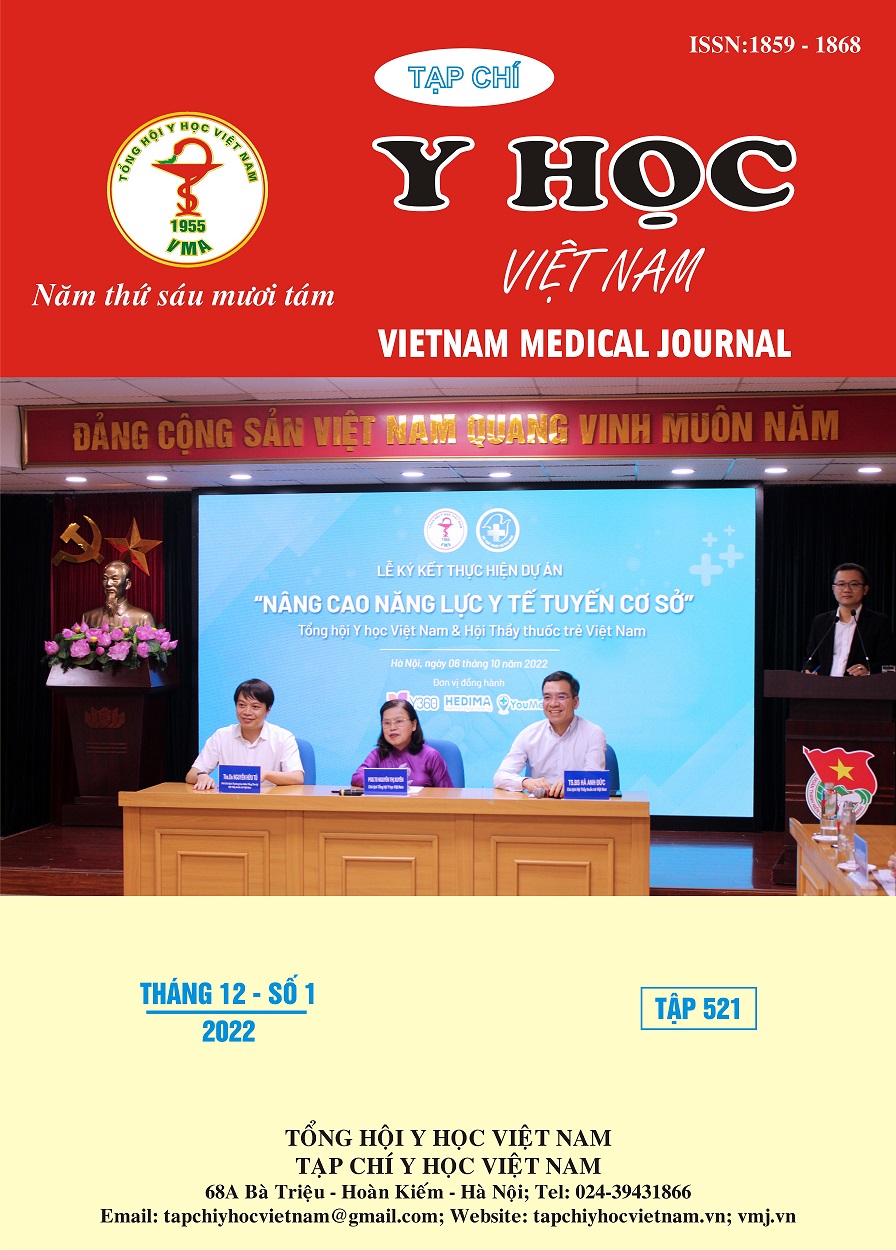CLINICAL AND PARACLINICAL CHARACTERISTICS OF PATIENTS WITH RECURRENT RENAL FIBRILLATION
Main Article Content
Abstract
Objectives: To study the clinical and subclinical characteristics of patients with recurrent kidney stones. Methods: Cross-sectional description. Results: Main clinical symptoms: 97.3% of patients had symptoms of low back pain. Hematuria was 17.3%; renal colic was 6.7%; Stone position on imaging: complex kidney stones was 22.7%, pyelonephritis was 34.7%, upper calyces was 16.0%, lower calyces was 13.3%, middle calyces was 13.3%; Stone size on imaging: The average size of stones on imaging was 24.9 ± 9.6mm, the smallest was 11mm and the largest was 57mm; Number of stones on imaging: 13/75 patients (13.7%) had 1 stone, 45/75 patients (60.0%) had three or more stones; Gravel surface area: The average gravel surface area was 275.7 ± 47.3 mm2, the smallest was 43 mm2, the largest was 619 mm2; The degree of dilatation of renal calyces on computed tomography: non-dilated renal calyces was 16.0%, grade I dilatation was 41.3%, grade II dilatation was 29.3%, grade III dilatation was 10.7 %, Grade IV stretch was 2.7%; Blood count test results: the average red blood cell count was 4.7 ± 0.5 T/l, the lowest was 3.2 T/l and the highest is 6.0 T/l. The percentage of Hematocrit was 42.9 ± 6.5 % and Hemoglobin was 142.5 ± 15.6 g/l. Conclusion: Research results show that low back pain is the most common symptom in recurrent kidney stone disease (97.3%). The average stone size was 24.9 ± 9.6mm, with group II renal dilatation was the highest with 30.3%. The proportion of patients with 3 stones was 60.0%.
Article Details
References
2. Nguyễn Phúc Cẩm Hoàng, Nguyễn Đình Nguyên Đức (2014), “Tán sỏi qua da trong sỏi thận tái phát”, Y học TP. Hồ Chí Minh, phụ bản số 4, 111-118.
3. Nguyễn Đình Xướng, Vũ Lê Chuyên, Nguyễn Tuấn Vinh (2008), “So sánh hiệu quả và các biến chứng giữa bệnh nhân mổ lần dầu và bệnh nhân có tiền căn mổ hở lấy sỏi thận trong phương pháp lấy sỏi thận qua da tại Bệnh viện Bình Dân”, Y học TP. Hồ Chí Minh,phụ bản số 1, trang 1-12.
4. Hossain F, Rassell M, Rahman S, Ahmed T, Alim MA (2016) "Outcome Of Percutaneous Nephrolithotomy In Patients With History Of Open Renal Surgery - A Comparative Study With PCNL In Primary Patients", Bangladesh Med J. 2016 Jan; 45 (1)
5. Tiselius H.G. Andersson A. (2003), Stone burden in a average Swedish population of stone formers requiring active stone removal: how can the stone size be estimated in the clinical routine?, European Urology, 43(3) 275- 281
6. Beetz R, Bokenkamp A, Brandis M, et al (2001). Diagnosis of congenital dilatation of the urinary tract. Consensus group of the Pediatric Nephrology working society in cooperation with the pediatric urology working group of the german society of urology and with the pediatric urology working society in the Germany society of pediatric surgery. Urologe A, 40, 495-507.
7. Hồ Trường Thắng (2015), Đánh giá hiệu quả phướng pháp tán sỏi thận qua da đường hầm nhỏ tại bệnh viện Việt Đức. Luận văn thạc sỹ Y học. Đại học Y Hà Nội
8. Mohamed F Abdelhafez (2013) "Residual Stones After Percutaneous Nephrolithotomy ", Med Surg Urol 2013


